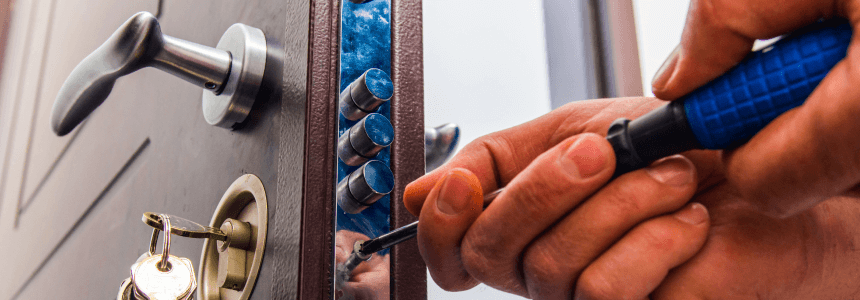
Contemplating coverage?
Subscribe to receive our emails & get
$200 OFF!
Have questions?
Call us: (833) 544-8273


Written By Angel Vallejo
Whether you’ve just moved into a new home, lost a key, or want more control over who has access to your house, rekeying your locks is a smart, cost-effective solution. Many homeowners wonder how to rekey a lock without calling in a locksmith. The good news is, with the right tools and guidance, you can do it yourself.
In this article, we’ll break down how to rekey a lock in just a few simple steps. We’ll also cover when it’s better to rekey versus replace your locks, common tools you’ll need, and tips to help make the process smooth and secure.
Before jumping in, it’s important to understand the difference between rekeying and replacing locks.
If your locks are in good condition and you’re simply concerned about who has access, rekeying is often the smarter choice.
Here are some common situations where rekeying your locks makes sense:
Knowing how to rekey a lock can empower you to take control of your home’s security without needing a full hardware upgrade.
Rekeying a lock at home doesn’t require professional locksmith equipment, but you will need a few essential tools:
You can find rekeying kits at most hardware stores or online for $10 to $25.
Here’s a simple walkthrough for how to rekey a lock at home. Note that these instructions are generalized. Please be sure to follow brand-specific guidance included with your rekey kit.
Use a screwdriver to remove the lock hardware (typically the interior and exterior knobs or levers). Carefully remove the cylinder from the lock housing.
Insert the original key into the cylinder and turn it slightly (usually 90 degrees) to align the key pins. Use the plug follower to push out the cylinder plug while keeping pressure steady. Be careful not to dislodge the top pins or springs.
Once the plug is out, remove the old key pins from the plug. Discard the old pins and make sure the plug is clean.
Use the pinning chart from your rekeying kit to match new pins to your new key. Insert your new key into the plug and place the correct pins into the chambers. All pins should be flush with the surface of the plug when aligned correctly.
Carefully reinsert the plug into the cylinder using the plug follower to keep everything aligned. Reinstall the cylinder into the lock housing. Attach the lock back onto the door and test your new key.
While the process is straightforward, a few common errors can cause headaches:
Take your time, and don’t hesitate to repeat a step if something doesn’t feel right.
While DIY rekeying works for many homeowners, there are times when hiring a pro is the best choice:
Professional locksmiths have access to more advanced tools and techniques and can complete complex jobs quickly and securely.
Taking the time to learn how to rekey a lock can offer multiple benefits:
Now that you know how to rekey a lock, you can take a proactive step toward better home security without the need for expensive replacements or locksmith services. Whether you’re a new homeowner or just want to simplify your keyring, rekeying is a valuable skill worth learning.
At Liberty Home Guard, we’re here to support every aspect of homeownership from securing your doors to protecting your systems and appliances. Check out our full range of home warranty plans and expert tips to keep your home safe, efficient, and worry-free.
There’s a reason Liberty Home Guard was rated the #1 Home Warranty
Service by U.S. News and World Report for 2021, 2022, 2023, and 2024. Check out our services.
To rekey a lock yourself, remove the lock from the door, take out the cylinder, replace the old pins with new ones from a rekeying kit matched to your lock brand, then reassemble and test the lock with your new key.
Rekeying is usually cheaper than replacing a lock because you only change the internal pins, not the entire hardware. A rekeying kit costs around $10–$25, while full lock replacement and installation can cost significantly more.
You should rekey your locks after moving into a new home, losing your keys, ending a roommate or tenant arrangement, or if you want all your locks to work with one key for convenience.
You’ll need a rekeying kit that matches your lock brand, new keys, a plug follower, a pinning chart, tweezers or needle-nose pliers, and a screwdriver.
No, you generally need the original key to rekey a standard lock. Without it, you’ll need a locksmith to pick or disassemble the lock before rekeying.
Stay Ahead of Potential
Home Mishaps!
Subscribe to our Liberty Home Guard Newsletter and gain access to exclusive content that ensures your peace of mind.